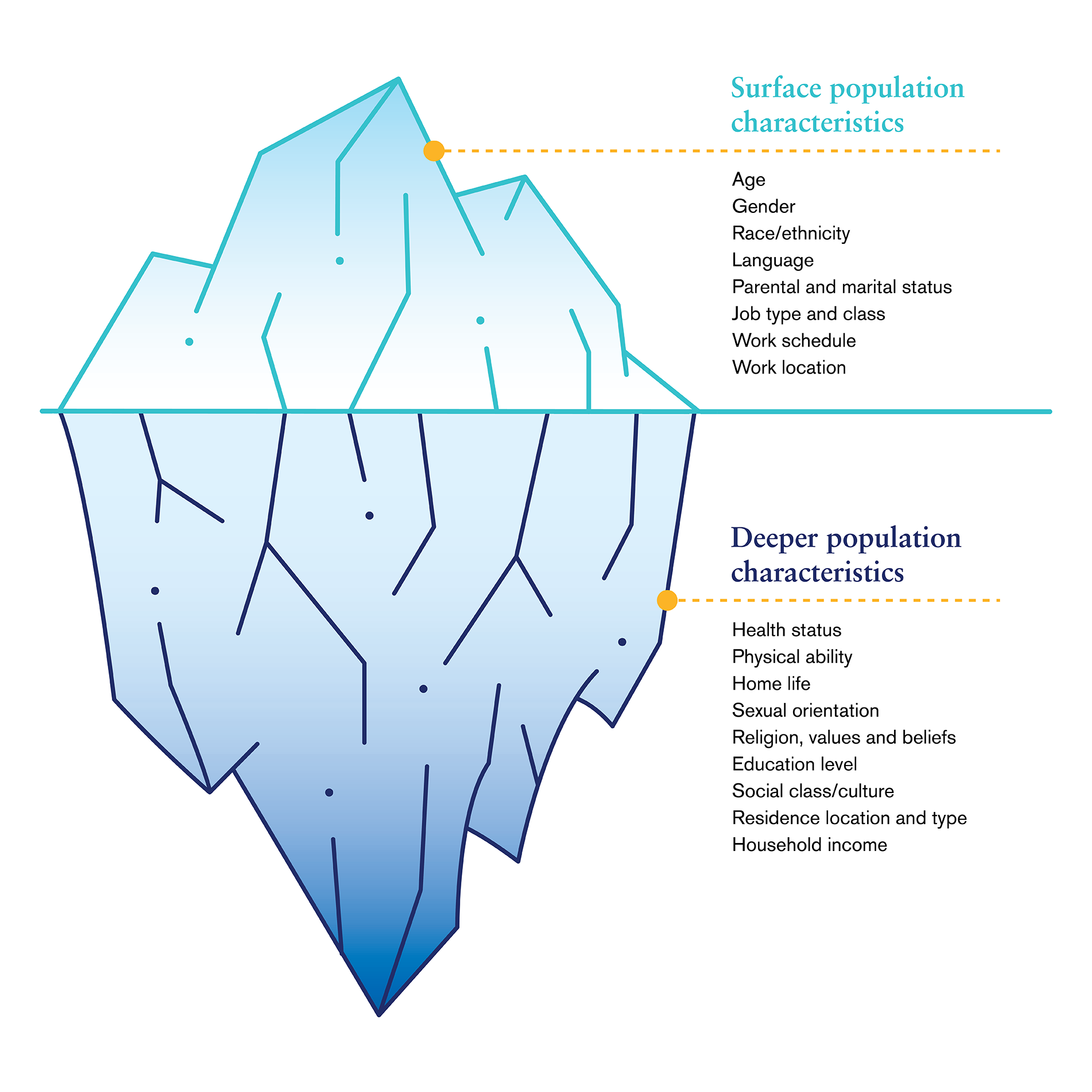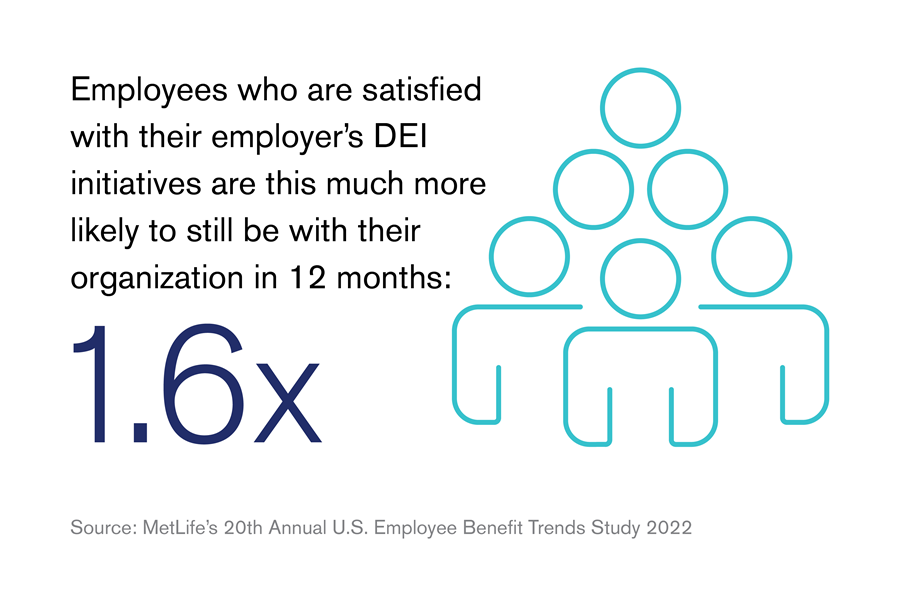

For good reason, diversity, equity and inclusion (DEI) is top of mind for employers. A diverse workforce can increase profits, boost productivity and attract new customers. Companies with diverse teams perform significantly better than their non-diverse peers, according to a McKinsey & Co. report.
Increasingly, employers are turning to their employee benefit programs for opportunities to directly support their workforce diversity efforts.

Share this page
When it comes to benefits, employees want options, as discussed in our insight, Employee Personalization: More Important Than Ever. As people’s expectations and workforce demographics change, traditional employee benefits are evolving to offer more choice, personalization and support for employees at each career and life stage.
Employers’ expanding reach can be seen in retirement and health benefits. Employers are advancing retirement readiness by providing resources for financial literacy, debt management and expense planning. On the health side, employers have embraced more consumer-focused designs supplemented by robust lifestyle, well-being and mental health services.
This evolution of traditional employee benefit programs may explain why 63 percent of employees would leave their current employer for better benefits elsewhere, even if the new employer offered equal or lower pay. That was one of the illuminating findings of the Human Workplace Index survey conducted last fall.
Despite the evolution of benefits choice, inequities in benefits design could lead to limited access, poor outcomes and high costs. Employees who face physical, financial or social constraints are often unable to fully take advantage of the programs offered by their employers. For instance, benefits are most often underutilized by people who lack the education or time to participate, due to competing work-life demands or a lack of resources. Cultural distinctions and language barriers can also act as disincentives.
Systemic issues related to our healthcare delivery system (e.g., access to proper healthcare treatments and providers, racial bias woven into courses of treatment and cultural insensitivity) further impact employees’ health. Similarly, financial advisors may fail to deliver services that address employees’ most basic financial and asset growth needs.
Unfortunately, it can be difficult to predict which population characteristics influence the success of employee benefit programs because some are far less visible than others, as illustrated below.

 Benefit programs designed to address various population characteristics will strengthen DEI. These benefits help employees meet their personal and professional goals, create greater employee loyalty and trust, and improve recruitment. For instance when deciding whether to accept a new job, nearly three-quarters (74 percent) of job candidates look at an organization’s commitment to DEI and/or affinity groups, compared to only 48 percent in 2021, according to the MetLife study cited in the sidebar.
Benefit programs designed to address various population characteristics will strengthen DEI. These benefits help employees meet their personal and professional goals, create greater employee loyalty and trust, and improve recruitment. For instance when deciding whether to accept a new job, nearly three-quarters (74 percent) of job candidates look at an organization’s commitment to DEI and/or affinity groups, compared to only 48 percent in 2021, according to the MetLife study cited in the sidebar.
Given this growing demand, why haven’t more employers considered DEI in relation to their benefit programs? The challenge may be knowing where to start.
Employers commonly look to their current workforce data to identify potential opportunities to strengthen their benefit programs. For instance, employers can glean valuable insights by asking the following questions:
Applying an equity lens to workforce data analysis can help inform benefits strategy. This may involve reimagining how the organization defines employee benefits and the workforce goals they are designed to meet.
Modernizing benefit strategies requires careful planning. Employers will want to review plan designs and offerings to ensure they are consistent with best practices and legally compliant. This is especially important when trying to improve outcomes for specific employee populations.
Employers sometimes find it helpful to beta test or roll out new programs in phases. A phased strategy can make it easier to identify unanticipated hurdles and quickly gather valuable participant feedback.
Employees aren’t the only ones holding organizations accountable to meet DEI goals. Boards of directors, investors, job candidates, community leaders, watchdog groups and customers increasingly expect to see progress.
The sooner companies realize that good HR means good PR, the quicker they’ll reap the rewards. Employee benefits and other tangible and measurable workforce programs are a critical component of this organizational reckoning.

Multiemployer Plans, Technology, Benefits Technology, ATC

Retirement, Compliance, Multiemployer Plans, Public Sector, Healthcare Industry, Higher Education, Corporate, Architecture Engineering & Construction

Health, Insurance, Multiemployer Plans, Public Sector, Healthcare Industry, Higher Education, Pharmaceutical, Corporate
This page is for informational purposes only and does not constitute legal, tax or investment advice. You are encouraged to discuss the issues raised here with your legal, tax and other advisors before determining how the issues apply to your specific situations.
© 2024 by The Segal Group, Inc.Terms & Conditions Privacy Policy California Residents Sitemap Disclosure of Compensation Required Notices
We use cookies to collect information about how you use segalco.com.
We use this information to make the website work as well as possible and improve our offering to you.